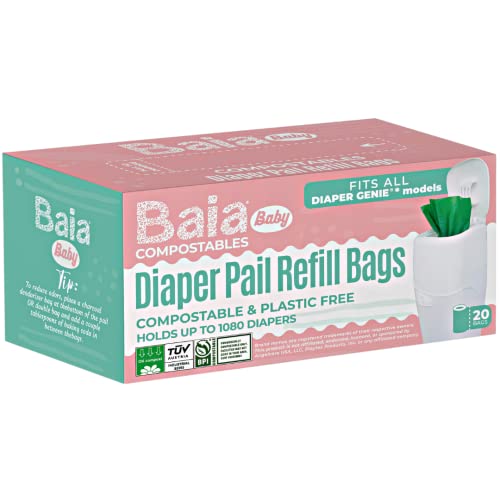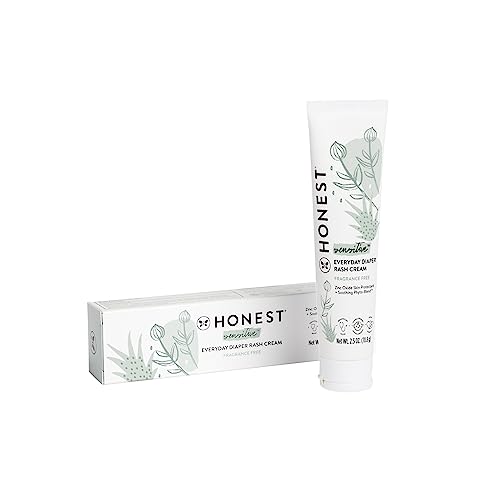
Hey there! So, imagine this – did you know that regular disposable diapers can take up to 500 years to decompose? Crazy, right? But don’t worry, we’ve got something that’s way better for the environment – biodegradable diapers! In this step-by-step guide, we’ll show you exactly how to use these eco-friendly diapers and do your part in reducing waste. Get ready to go green with your baby’s diapers!
Earth-friendly Diaper Delights!
The 30-Second Guide to Cloth Diapers and Dealing with Poop
Step 1: Choose the right biodegradable diaper brand
To research and find a reputable brand of biodegradable diapers that aligns with your needs and preferences, follow these steps:
- Start by conducting an online search for biodegradable diaper brands. Make sure to include specific keywords like “eco-friendly,” “sustainable,” or “compostable” to narrow down your options.
- Look for customer reviews and ratings for each brand you come across. Check reputable websites or parenting forums to get a better understanding of the product’s performance, comfort, and overall quality.
- Consider your specific needs and preferences when comparing different brands. Some factors to consider include absorbency, fit, materials used, and any additional features like wetness indicators or hypoallergenic options.
- Take note of any certifications or eco-labels that the brand may have. Look for certifications such as “ASTM D6866” or “OK Biobased” to ensure that the diapers are truly biodegradable.By following these steps, you can find a reputable brand of biodegradable diapers that meets your requirements and contributes to a more sustainable environment.
Step 2: Read the instructions
To effectively use biodegradable diapers from the brand, it is essential to read and understand the provided instructions. Start by locating the instructions on the diaper packaging or in the accompanying leaflet. Take your time to thoroughly go through the instructions, paying attention to key details such as proper diaper placement, fastening methods, and disposal guidelines. For example, the instructions may specify how to position the diaper tabs for a secure fit, or how to fold and seal the diaper for hygienic disposal. By carefully reading the instructions, you will ensure that you are using the diapers correctly, promoting both comfort for your baby and environmental sustainability.
Step 3: Prepare the changing area
- Gather all the necessary supplies for changing the diaper, such as clean wipes, a changing pad, and a diaper disposal system.
- Make sure the wipes are easily accessible and within arm’s reach.
- Place a clean changing pad on a flat and stable surface, like a changing table or bed.
- Set up the diaper disposal system nearby to easily dispose of the used diaper.
- Example: “First, gather clean wipes, a changing pad, and a diaper disposal system. Place the wipes within arm’s reach and lay the changing pad on a stable surface. Set up the diaper disposal system nearby for easy access.”
Step 4: Open the biodegradable diaper
To open the biodegradable diaper, gently pull apart the sides of the diaper. Be careful not to tear or damage the material as you unfold it. Make sure to handle the diaper with care to ensure it remains intact for use.
Step 5: Lift the baby's legs
To lift your baby’s legs, place one hand under their ankles and the other hand under their knees. Carefully lift their legs towards their chest, making sure to support their lower back and head. Once their legs are raised, gently slide out the soiled diaper from underneath them.
Step 6: Clean the baby's bottom
To clean your baby’s bottom, start by using baby wipes or a damp cloth. Gently wipe their bottom, making sure to clean thoroughly. Once you have cleaned the area, pat it dry with a towel or allow it to air dry before putting on a fresh diaper.
Step 7: Position the biodegradable diaper
Place the clean biodegradable diaper under your baby’s bottom, ensuring that the back is centered and the front is slightly elevated.
Step 8: Secure the biodegradable diaper
To secure the biodegradable diaper, fasten the tabs or adhesive strips tightly around the waist, making sure they are snug but not too tight. Ensure a comfortable fit by adjusting the diaper so it is neither too loose nor too restrictive. This will help prevent leaks and provide a secure and comfortable experience for your little one.
Step 9: Dispose of the used biodegradable diaper
To properly dispose of the used biodegradable diaper, place it in a designated diaper disposal system or follow your local waste management guidelines. If there is a designated diaper disposal system, simply drop the used diaper into the container. If there are specific waste management guidelines in your area, follow those instructions for disposing of the diaper. Remember to always dispose of it responsibly to minimize environmental impact.
Wrap it up!
In conclusion, using biodegradable diapers is not only a great choice for your baby’s comfort and well-being but also for the environment. By selecting the right brand, following the instructions, and properly disposing of the used diapers, you can make a positive impact. Remember, every small step counts in creating a sustainable future. So go ahead, give biodegradable diapers a try and feel good about your contribution to a greener world. Your baby and the planet will thank you!
What You’ll Need!
Easy Eco-Friendly Solutions!
Getting Started with Biodegradable Diapers
- Start by choosing the right size: Check the weight range on the packaging of the biodegradable diapers and select the appropriate size for your baby. This will ensure a snug and comfortable fit
- Prepare the diaper: Before putting on the diaper, unfold it and gently stretch the sides to ensure it is open and ready for use. This will make it easier to put on your baby
- Position the diaper correctly: Lay your baby on their back and slide the back of the diaper under their bottom, making sure the back is centered. Pull the front of the diaper up between their legs, ensuring it covers their bottom completely
- Fasten the diaper securely: Bring the front of the diaper up and fasten the tabs on the sides snugly but not too tight. This will prevent leaks and provide a comfortable fit for your baby
- Dispose of the used diaper properly: Biodegradable diapers are designed to break down naturally, but it’s still important to dispose of them correctly. Wrap the soiled diaper in a biodegradable bag or separate it from other waste before disposing of it in the appropriate trash bin
- Remember, every baby is different, and it may take a few tries to get the hang of using biodegradable diapers. Don’t worry, you’ll quickly become a pro at it!
Got Questions about Biodegradable Diapers? We’ve Got Answers!
How do biodegradable diapers compare in price to traditional diapers?
When it comes to the price comparison between biodegradable diapers and traditional diapers, it’s essential to consider a few factors. Biodegradable diapers generally tend to be slightly more expensive than traditional diapers. This is primarily because they are made from eco-friendly materials and have a lower impact on the environment. However, the price difference might vary based on the brand, size, and where you purchase them. It’s always a good idea to compare prices and look for deals or discounts to find the best value for your money. Remember, choosing biodegradable diapers aligns with your commitment to sustainability and protecting the environment, which can be worth the extra cost for some families.
Do biodegradable diapers use any chemicals or additives?
Yes, biodegradable diapers may contain some chemicals or additives, although they are generally made with fewer harmful chemicals compared to traditional disposable diapers. The purpose of these additives is to enhance their absorbency, prevent leakage, and provide a comfortable fit. However, the specific chemicals and additives used can vary between brands, so it’s always a good idea to check the product labeling or reach out to the manufacturer for more detailed information.
Can biodegradable diapers be used for babies with sensitive skin?
Yes, biodegradable diapers can be a great option for babies with sensitive skin. These diapers are made from natural and organic materials, which are less likely to cause skin irritation or allergies. They are free from harsh chemicals, fragrances, and dyes that are commonly found in traditional diapers. Biodegradable diapers are designed to be gentle on your baby’s delicate skin while providing effective protection against leaks. However, every baby’s skin is unique, so it’s always a good idea to consult with your pediatrician before making any changes to your baby’s diapering routine.
Can biodegradable diapers be flushed down the toilet?
No, it is not recommended to flush biodegradable diapers down the toilet. Although these diapers are designed to break down more easily than regular diapers, they can still cause plumbing issues. It is best to dispose of them in a trash bin or follow the specific disposal instructions provided by the diaper manufacturer.
Are biodegradable diapers available in different sizes?
Yes, biodegradable diapers are available in different sizes. Manufacturers offer a range of sizes to accommodate babies of different ages and weights. You can find biodegradable diapers in sizes ranging from newborn to toddler, ensuring a proper fit for your little one.














